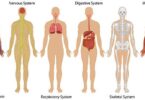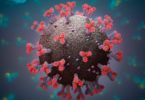Kingdom Monera (Biology MCQs):
The decomposition of organic compounds in the presence of O2 without the development of odoriferous substance is
(a) Nitrifixation
(b) Decay
(c) Denitrifixation
(d) Nitrogen fixation
Which of the following may cause water blooms
(a) Bacteria
(b) Mycoplasma
(c) Virus
(d) Blue-green algae
Organisms which have cells but no distinct nucleus
(a) Bacteria
(b) Cyanobacteria
Bordetella pertusis causes
(a) Influenza
(b) Pneumonia
(c) Meningitis in young children
(d) Whooping cough
When cocci are present in the bunch, they are called?
(a) Diplococci
(b) Streptococci
(c) Staphylococci
(d) Streptobacilli
“Crown gall” is caused by
(a) Mycobacterium
(b) Bacteria
(c) Erwinia
(d) Clostridium
Cyanobacteria originated about how many years ago?
(a) 1 billion
(b) 2 billion
(c) 3 billion
(d) 4 billion
Smallest bacteria is
(a) Spirillium
(b) Bacillus
(c) Dialister
Root nodules for nitrogen fixation in nonleguminous trees are produced by species of the genus
(a) Rhizobium
(b) Azatobacter
(c) Frankea
(d) Thiobacillus
Related: Centre of Mass questions
Meningitis a disease is responsible for membrane damage of the brain is caused by:
(a) A fungus
(b) Bacillus
(c) Neisseria
(d) Bordetella
Prokaryotes are identified by
(a) Absence of mitochondria
(b) Absence of nuclear membrane
(c) Absence of chloroplast
(d) Absence of cell membrane
What are episomes?
(a) Hereditary DNA of bacterial cell
(b) Extrachromosomal hereditary material of bacteria associated with nucleoid
(c) Modification of the cell membrane performing respiration
Transfer of genetic information from one bacterium to another in the transduction process is through
(a) Physical contact between donor and recipient strains
(b) Conjugation between opposite strain bacterium
(c) Bacteriophages released from the donor bacterial strain
(d) Another bacterium having special organ for conjugation
Which of the following is non-symbiotic biofertilizer?
(a) VAM
(b) Azotobacter
(c) Anabaena
(d) Rhizobium
Blue-green algae and bacteria show similarity in
(a) Both show anaerobic respiration
(b) Both show the presence of chlorophyll
(c) Both are devoid of true nucleus
Pili in bacteria represent
(a) Extra-chromosomal genetic element
(b) Protoplasmic outgrowths of donor cells
(c) Small flagella
(d) Special bacterial cilia
There is no alternation of generation in Esche–richia coli because there is no
(a) Syngamy
(b) Reduction division
(c) Conjugation
Related: Diversity of Living World Sample Paper
Which of the following is Xanthomonas related?
(a) Xanthophyceae
(b) Causing disease in Xanthium
(c) A kind of Virus
(d) Causing Citrus canker disease
Which of the following characters of Nostoc resembles other prokaryotes?
(a) Absence of definite nucleus
(b) Ability to fix nitrogen
(c) Multiplication by fission
(d) All the above
A mutant micro-organism unable to synthesize a compound required for its growth but able to grow if the compound is provided, is known as
(a) Auxotroph
(b) Prototroph
(c) Autotroph
Bacterial blight of rice is caused due to
(a) Xanthomonas oryzae
(b) Helminthosporium oryzae
(c) Pseudomonas falcatum
(d) Xanthomonas falcatum
Which of the following has polar nodule on both the ends?
(a) Akinetes
(b) Hormogonia
(c) Heterocysts
Bacteria reproduce sexually by
(a) Endospores
(b) Transformation
(c) Conidia
(d) Exospores
The filament of Mastigocladus laminosus is
(a) Unbranched
(b) Branched
(c) Short
Related: Optics Sample Paper (Physics)
Which of the following is osmotically inactive?
(a) Bacteria
(b) Mycoplasma
(c) Nostoc
Which may be called as badsonia?
(a) Virus
(b) Mycoplasma
(c) L–form bacteria
For the production of which of the following, the activity of the fungus or micro-organisms is not required
(a) Casein
(b) Cottage Cheese
(c) Curd
(d) Wine
‘Peptidoglycan’ is a characteristic constituent of the cell wall of
(a) Eubacteria and unicellular eukaryotes
(b) Bacteria and cyanobacteria
(c) Archaebacteria and eukaryotes
(d) All members of ‘monera’ and ‘protista‘
Blebs can be noted in
(a) Spirogyra
(b) Mycoplasma galisepticum
(c) Pseudomonas cola
An organism having cytoplasm DNA and RNA but no cell wall is
(a) Cyanobacterium
(b) Mycoplasma
(c) Bacterium
(d) Virus
Retting of fibres is caused by
(a) Bacillus
(b) Clostridium
(c) Nitrobacter
(d) Rhizobium
Salmonella sp. Is
(a) Monotrichous
(b) Lophotrichous
(c) Amphitrichous
(d) Peritrichous
Related: Hydrocarbons Sample Paper (Chemistry)
Mycoplasma is
(a) Gram positive
(b) Gram negative
(c) Some species are gram positive
Human symbiotic bacteria help in
(a) Intake of meals
(b) Digestion of meals
(c) Excretion of digested meal
(d) None of these
Genes for antibiotic resistance are located in
(a) Chromosome
(b) Nucleus
(c) Cell wall
(d) Plasmid
Which of the following is intermediate between viruses and bacteria?
(a) Mycoplasma
(b) Spirilla
(c) Virons
(d) Voriola
Which of the species of mycoplasma causes human sterility?
(a) M. hominis
(b) M. fermentans
(c) T. mycoplasma
Why mycoplasma is pleuomorphic?
(a) Due to absence of cell wall
(b) Due to presence of three layered cell membrane
(c) Due to the presence of sterol
A bacterium which is commonly present in the intestine of man and animal is
(a) Bacillus’brevis
(b) Escherichia coli
(c) Streptococcus lactis
(d) Pseudomonas citri
Nostoc may form
(a) Simple colony
(b) Compound colony
(c) Both
Tuberculin produced by the bacterium causing tuberculosis is
(a) Hormone
(b) Enzyme
(c) Exotoxin
(d) Endotoxin
Which of the following important features are found in blue-green algae?
(a) Abundant secretion of pectin
(b) Presence of phycocyanin – C as dominant pigment
(c) No plastids
(d) All of these
Naked DNA is that which is
(a) Not covered by nuclear envelope
(b) Present in cytoplasm
(c) Associated with histone proteins
(d) Not associated with histone proteins






